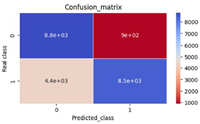Hindustani classical music revisited statistically: Does the order of Markov chain in the note dependence depend on the raga or the composition?
Abstract
Rendering musical notes randomly does not create music. To generate music, there has to be a pattern that makes the musical notes dependent. It is therefore of interest to know whether the probability of the next note depends on the current note only or whether it depends on the note(s) prior to the current note. In other words, it is important to explore the order of the Markov chain in the musical piece. In the context of Hindustani classical music, does this order depend on the raga or the composition? The present work addresses this fascinating question and attempts to answer it through Akaike’s information criterion (AIC). It appears, interestingly, that the order of the Markov chain is dependent on the raga, which has a well-defined melodic structure with fixed notes and a set of rules characterizing a particular mood that is conveyed by performance. As long as these rules are maintained, as in a raga bandish, the order of the Markov chain is invariant over the raga compositions.
References
[1]Fauvel J, Flood R, Wilson R. Music and Mathematics: From Pythagoras to Fractals, Oxford University Press, Illustrated Edition, 2006.
[2]Chakraborty S, Mazzola G, Tewari S, Patra, M. Computational Musicology in Hindustani Music. Springer International Publishing, Switzerland, 2014.
[3]Datta AK, Solanki SS, Sengupta R, et al. Signal analysis of Hindustani classical music, Springer Singapore, 2017.
[4]Chakraborty S, Tewari S, Rahman A, et al. Hindustani Classical Music: A Historical and Computational Study, Sanctum Books, 2021.
[5]Castellano MA, Bharucha JJ, Krumhansl CL. Tonal hierarchies in the music of North India. Journal of Experimental Psychology: General. 1984, 113(3): 394-412. doi: 10.1037/0096-3445.113.3.394
[6]Jairazbhoy NA. The Rags of North Indian Music: Their Structure and Evolution, Faber and Faber Limited, 1971.
[7]Srivastava GP, Kresin V. The Physics of Phonons. Physics Today. 1991, 44(12): 75-76. doi: 10.1063/1.2810367
[8]Burack J. Uniting mind and music: Shaw’s vision continues. The American Music Teacher 55.1 (2005): 84.
[9]Thaut MH, Kenyon GP. Rapid motor adaptations to subliminal frequency shifts during syncopated rhythmic sensorimotor synchronization. Human Movement Science. 2003, 22(3): 321-338. doi: 10.1016/s0167-9457(03)00048-4
[10]Hasan MA, Thaut MH. Statistical Analysis for Finger Tapping with a Periodic External Stimulus. Perceptual and Motor Skills. 2004, 99(2): 643-661. doi: 10.2466/pms.99.2.643-661
[11]Zentner M, Eerola T. Rhythmic engagement with music in infancy. Proceedings of the National Academy of Sciences. 2010, 107(13): 5768-5773. doi: 10.1073/pnas.1000121107
[12]Bhattacharjee A, Srinivasan N. Hindustani raga representation and identification: a transition probability based approach. IJMBC. 2011; 66-91.
[13]Tong H. Determination of the order of a Markov chain by Akaike’s information criterion. Journal of Applied Probability. 1975, 12(3): 488-497. doi: 10.2307/3212863
[14]Medhi J. Stochastic processes, New Age Science_3rd Revised edition, 2012.
[15]Ross SM. Stochastic processes. John Wiley & Sons, 1995.
[16]Parzen E. Stochastic Processes. Published online January 1999. doi: 10.1137/1.9781611971125
[17]Cinlar E. Introduction to stochastic processes. Courier Corporation, 2013.
[18]Nierhaus G. Algorithmic Composition: Paradigms of Automated Music Generation, 1st Edition. Springer, 2008.
[19]Pawan J. Raag Kafi Introduction & Bandish Notation (Hindi). Available online: https://www.sursaritatechknow.com/2020/11/raag-kafi-parichay-and-bandish-notation.html (accessed on 5 February 2023).
[20]Available online: https://raag-hindustani.com/22_files/KafiAaja.jpg (accessed on 6 March 2023).
Copyright (c) 2024 Soubhik Chakraborty, Aiman Habib, Prerna Singh

This work is licensed under a Creative Commons Attribution 4.0 International License.











